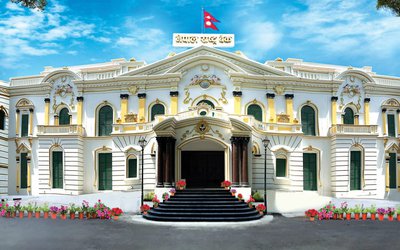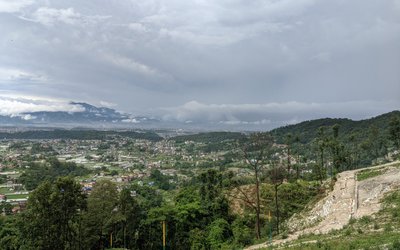
The Government of Nepal released its budget on May 28, 2016 for the fiscal year 2016-2017. The government has announced the budget of 10 trillion 49 billion for the upcoming fiscal year. We all can understand that the government has many things to answer to – the debilitating state of economy for the past many years, inadequate growth in agriculture, inadequate investment in capital expenditures, and current state of recovery and reconstruction in the country. The citizens have been able to witness neither transparency nor accountability on the government’s part. And the government seems to attempt to pacify the citizens by drafting an annual budget that is very high than what Nepal can secure and spend and is quite scattered amongst many people and sectors, not to mention allocating less for sectors that can bring a positive change in the country.
Drafting and releasing the annual budget is a way for the state to set its priorities and to convey to the citizens what those priorities are. The current budget depicts that the state has put everything under its priority umbrella, which conveys that the priorities have not been set with precision. Increase in capital expenditure, growth in agricultural productivity, reconstruction and many more – such larger goals are yet again emphasized with no clear indication on what specific activities will be accomplished to accomplish the given goals.
In the midst of setting these priorities, which I may add are not innovative as these have always been Nepal’s priorities, the state has failed to prioritize those sectors which can bring gradual yet sustained changes in the country’s given situation. First, the percentage of budget allocated for the education sector is at an all-time low – only 11.6% of the current total budget has been allocated for the education sector. Second, the budget appears to be less ‘gender responsive’ that what is expected for a country which has promised to have a provision for a gender responsive budget.
The percentage of budget allocated for the education sector has been decreasing since 2011. The budget for education reduced from 16% in 2011 to 12% in 2015 and will be 11.6% in 2016, an all-time low in over the past decade. Lack of sufficient budget for the education sector gives the impression that the government does not consider investing in human capital as a priority. Making grand plans to increase capital expenditure and invest in development infrastructure will not come to fruition until the human capital input remains low in terms of number and required skills. It is interesting that even though the budget for the education sector is insufficiently low, the government believes it can achieve a lot within the allocated budget in the next fiscal year. For example, ‘primary education would be made compulsory and free while secondary education would be gradually made compulsory and free’. The question that arises is – will the government be able to provide good infrastructure and support curriculum development of schools within the allocated budget so that school fees become unnecessary? Many such questions can be asked about other education goals set by the government, making government’s budget estimation appear less credible.
Moreover, there seems to be no concrete plan to mainstream and prioritize the needs and capabilities of women in the country. For instance, the budget allocated for ‘increase in agricultural output’ does not seem to have a provision for increasing women’s role and productivity in agriculture through initiatives such as trainings and agricultural cooperatives. This is highly necessary to increase women’s access to income earning opportunities and to ensure that women take an active part in the recovery and reconstruction processes of the country. However, unfortunate as it may seem, the state does not seem to understand the role of women in Nepal’s economic development and prioritize it accordingly.
As I was researching on the topic, I not only questioned government’s priorities, but I questioned those of the citizens as well. Naturally, there has been a lot of debate about the budget – there have been discussions around the new budget ‘violating fiscal discipline’ and ‘the finance minister failing to explain implementation.’ No one or party, other than education activists, teachers, and education ministries, has considered the reduction in budget allocation for education to be a serious issue and one that requires major attention. Discussions around the budget were also silent about the lack of provision for a gender responsive budget and the role women can play to uplift the country’s economy.
I find it necessary to emphasize that those areas that matter the most for gradual yet steady and sustained improvement should not be overlooked. These may be only two of many issues present in the newly announced budget for fiscal year 2016-2017. Moving forward, the state needs to prioritize concrete achievable objectives. Focusing on small scale sustainable objectives will ultimately lead to the achievement of larger goals.
- Poor (country) on a pile of money
- Dec 16, 2016
- Careful Financial Regrouping Cutbacks Imminent
- Nov 18, 2016
- Women Securing Water
- Oct 01, 2016
- Faithful or Fearful Fluctuations
- Aug 31, 2016
- Walking on Prachanda path?
- Aug 11, 2016
















